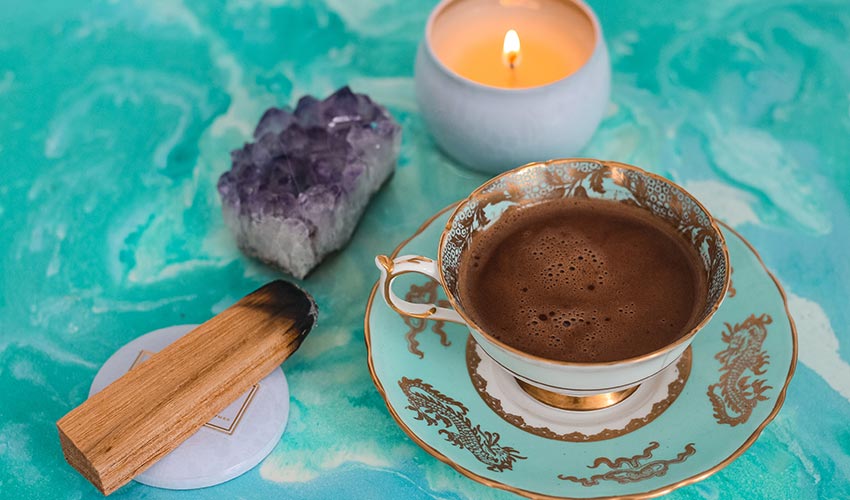Palo Santo: Deep History & Sacred Scent
Palo Santo, with its enchanting scent and rich cultural history, is much more than just fragrant wood waved around at ceremonies by a bunch of hippies. For centuries, this "holy wood" has played a significant role in spiritual and traditional practices across South America. In this article, we delve into the history of Palo Santo, exploring its origins, cultural significance, and the potential reasons behind its ever growing popularity.
I first came to Palo Santo at one of Tom’s ceremonies at Ancient Purity, it was being passed around while we were drinking Keith’s Cacao outside, the sun was just setting, I was in amazing company, it was such an incredible setting for the beginning of my love affair with Palo Santo. Sniffing the smoke from wood was new to me as normally the fumes can be quite, well smoky! But Palo hits differently, and the smoke it emits is actually quite light and gentle. Spanish monks have said that wherever the smoke from Palo Santo goes it purifies and cleanses so it can be used in rooms, entire homes and of course, on people. Shamanic wisdom has also stated that those with an attraction to the aroma of Palo Santo is a sign of spiritual and emotional purity in the individual. If for any reason there is discomfort from the aroma then don’t despair, this is all a part of the purifying effect and with frequent exposure to the smoke you’ll grow to love the fragrance and the woods purification can take place, leaving you with that “lighter” feeling in your energy field just like I, and so many others I know, have had with this irresistible wood.

The Origins of Palo Santo
Palo Santo, scientifically known as Bursera graveolens, is a tree native to the coastal regions of South America, primarily found in countries like Ecuador, Peru, and parts of Central America. The name "Palo Santo" translates to "holy wood" or "the wood of the saints" in Spanish, reflecting its deep spiritual significance.
Palo Santo is part of the Burseraceae family, which includes other aromatic trees like frankincense and myrrh. The tree is known for its distinctive, uplifting fragrance when burned, which has made it a staple in various rituals and ceremonies.
Cultural and Spiritual Significance
Traditional Medicine
Indigenous people in South America have been using Palo Santo for centuries for its purported healing properties. It is often used to alleviate symptoms of colds, stress, headaches, and even as a natural insect repellent. When burned, the smoke is believed to cleanse negative energy and promote physical and spiritual well-being.
Spiritual and Ritual Practices
Palo Santo has deep ties to shamanic and spiritual practices in South America. It is commonly used in ceremonies to purify spaces, clear energy, and prepare participants for sacred rituals. The scent is believed to elevate one's consciousness and connect them to the spiritual realm.
Protection and Warding Off Evil
Palo Santo is often used as a protective tool against negative influences and evil spirits. People burn Palo Santo to create a shield of positive energy around themselves or their homes.
Enhancing Meditation and Mindfulness
Many practitioners of meditation and mindfulness use Palo Santo as an aid to create a serene and focused environment as it can help with concentration. The aromatic smoke helps individuals enter a state of deep relaxation and mental clarity.
Harvesting Palo Santo
Palo Santo is harvested from naturally fallen branches and trees. The wood must be left to age for several years after its natural death (very important!), allowing the resins and oils to mature and develop their characteristic aroma. Sustainability is a critical consideration in harvesting Palo Santo, as overharvesting can endanger the species. Responsible and ethical sourcing practices are essential to preserving the sacred tree and its ecosystem. Every fallen tree is then replaced with a seedling to keep the Palo Santo population growing.

The Global Popularity of Palo Santo
Palo Santo has gained global popularity recently as people from various backgrounds have embraced its unique scent and spiritual benefits. Its aroma is often used in aromatherapy, natural perfumery, and wellness products. Indigenous cultures have also been known to use it as a Mosquito repellent. Palo Santo essential oil is mainly composed of limonene which is a substance with insecticide properties, so it’s said to be used in natural insect repellents. You can find Palo Santo in various forms, including incense sticks, chips or powder, essential oils, smudging bundles, and resin incense. We sell a Peruvian sourced bag of Palo Santo in stick form which last ages, and I burn mine nearly every day. The same stick is used quite a number of times before it can no longer be burned.
Palo Santo is not just a fragrant wood; it is a symbol of spirituality, healing, and cultural richness. Its history is deeply intertwined with the traditions and beliefs of South American indigenous cultures, and I’m so happy it seems to be growing in popularity. Whether used in sacred ceremonies, for relaxation, or simply to enjoy its captivating scent, Palo Santo remains a powerful and cherished part of our shared human heritage, inviting us to connect with nature and our inner world. I use it every day as previously mentioned, as the smell instantly relaxes me and instils a feeling of calm. Many individuals at my circle events also comment on the instantly, undeniably relaxing effect of the scent of Palo Santo.






















